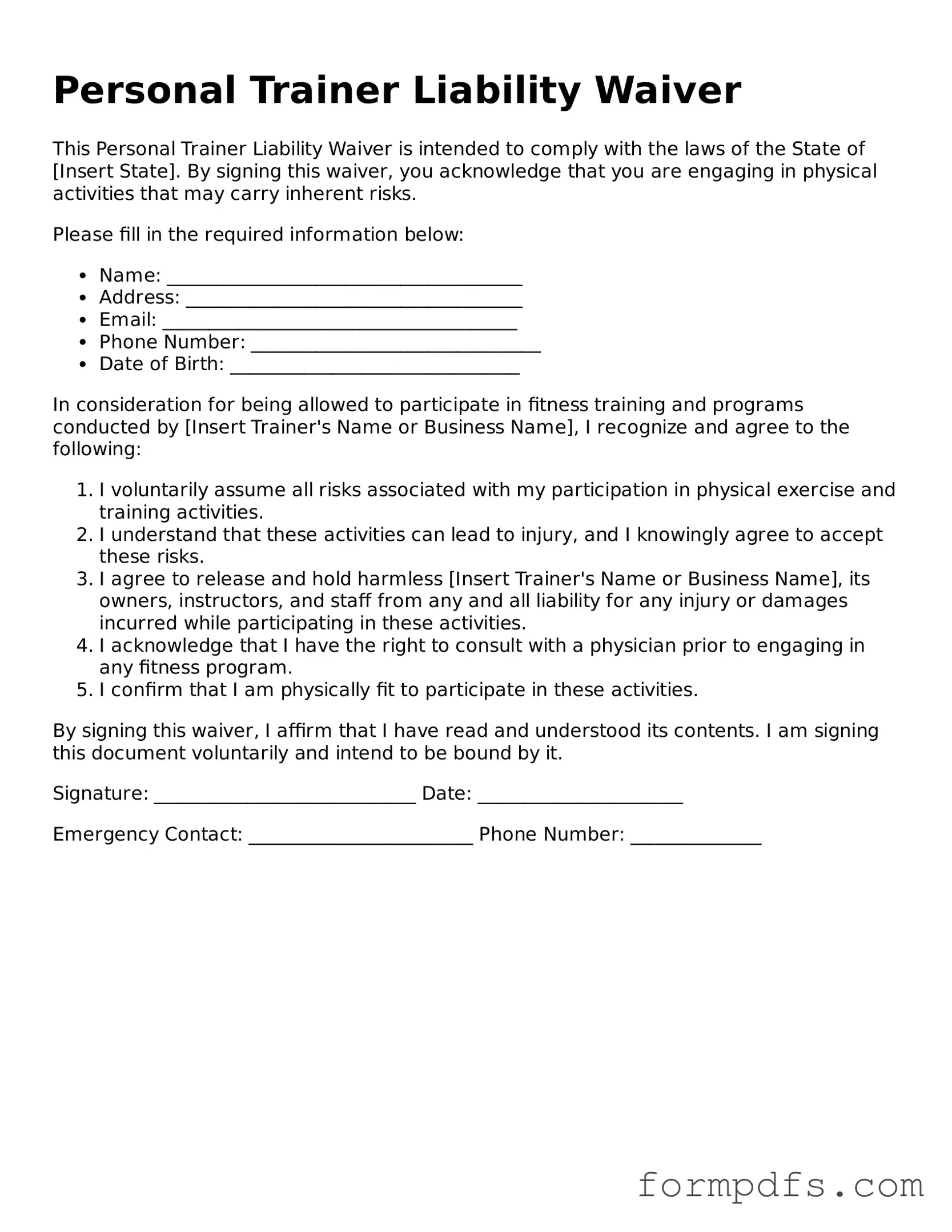What is a Personal Trainer Liability Waiver form?
A Personal Trainer Liability Waiver form is a document that clients sign to acknowledge the risks associated with physical training. By signing this form, clients agree that they understand these risks and accept responsibility for any injuries that may occur during their training sessions. This waiver is designed to protect personal trainers from legal claims arising from accidents or injuries that happen while clients are participating in workouts or fitness activities.
Why should I sign a Personal Trainer Liability Waiver?
Signing a Personal Trainer Liability Waiver is an important step for both clients and trainers. For clients, it provides clarity about the inherent risks of exercising and emphasizes personal accountability. For trainers, it serves as a protective measure against potential lawsuits. By signing the waiver, clients acknowledge that they have been informed of the risks and agree to participate in training sessions voluntarily, which can help prevent misunderstandings in the future.
Can I still sue my personal trainer after signing the waiver?
While a Personal Trainer Liability Waiver can limit a trainer's liability, it does not completely eliminate the possibility of a lawsuit. If a trainer acts negligently or fails to provide a safe environment, clients may still have grounds for legal action. Courts often look at the specifics of each case, including whether the trainer's actions were reasonable and whether the waiver was clearly explained and understood. Therefore, while the waiver offers some protection, it does not provide absolute immunity.
What should I do if I have questions about the waiver?
If you have questions about the Personal Trainer Liability Waiver, it’s essential to address them before signing. Speak directly with your personal trainer or the facility where you are training. They should be able to clarify any points of confusion and explain the waiver’s implications. Additionally, if you have legal concerns, consulting with a lawyer who specializes in personal injury or contract law can provide further guidance and reassurance.
